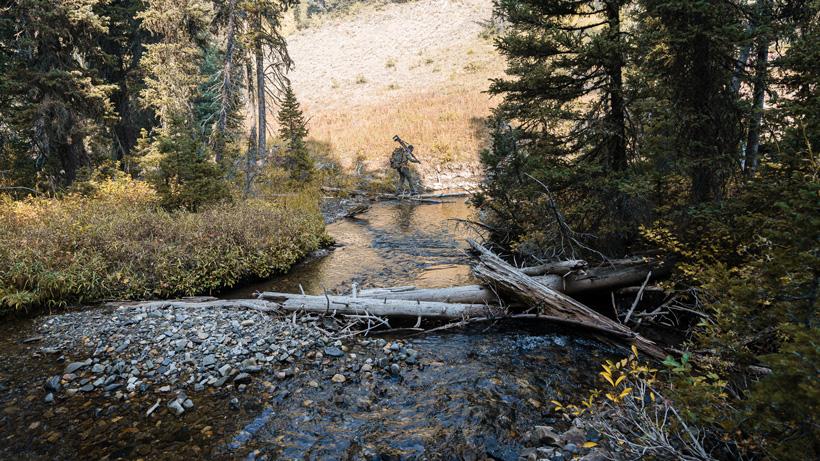




Crossing a stream can be a dangerous, but inevitable and necessary part of backcountry hunting in the West. These streams are often fast-moving water at near-freezing temperatures. There are dangers that naturally incur from crossing any type of moving water, including sprains, bruises, impalements, drawing, hyperthermia, and more. However, there are times that you will need to or want to cross a stream and I want to provide you with a few tips that can aid your crossing and help keep you safe once you have found the lowest risk and a safe crossing point as explained in part one of this article.
This is the second part of the "Safe stream crossing series." You can catch part one at the link below.
When planning to cross a stream, you may want to think about the time of day you are crossing and what time it might be when you have to cross back over. You may not think that the time of day matters if it is not raining, but it truly does, especially if there is snow on the ground at any elevation in that basin. Throughout the day the sun can cause snow to melt, causing a runoff to increase the speeds and intensity of the stream. This is why crossing during the early morning hours might be your best opportunity to take advantage of calmer, lower-level waters.
A lot of people like to take off their boots and cross streams barefoot to have dry feet to hunt with; however, this is not advisable. Though your shoes might be dry you are more likely to slip and get injured when barefoot because you do not have tread or ankle support. If you are worried about wet boots I promise you, they will dry. I think it's a good idea to take off the socks you are wearing or switch to a different pair of shoes if you have them with you. Remember to leave your shoes on to prevent injury and keep you moving down the trail.
Whenever you cross a stream on your own, it is important to maintain at least two points of contact with the ground at all times, yet three is much better. To be able to achieve this goal, take a walking stick or trekking pole to help maintain your balance. With at least one trekking pole on the ground, keep one foot firmly planted and use the other foot to try and find a secure place to transfer your weight. If at any point your new foot position does not feel right, shuffle around and try to find a new spot to plant your foot before transferring your weight. Once a secure position is located, you then can slowly transfer your weight. Moving across a stream should always be a slow, conscientious process facing the current. If you cross this way you will always have a better chance to stay dry than someone doing it in a hurry.
It may go against some of your normal thought processes to unbuckle your pack, but I promise that it is a good idea. Not only will your pack weigh you down if you get knocked down, it also has straps and buckles that can easily get snagged on the bottom, pinning you to the ground. There is nothing in your pack that is worth your life so if you go down, ditch it quickly. Once you are safely on the shore, you can hike downstream to find your pack, which will most likely get stuck on the bank or rock outcroppings. If you have extra people with you, you can always position one or two downstream in case they need to help you or grab a floating pack before it heads downstream too far.
It is never a good idea to cross a stream when the water is above your knees when solo hunting in the backcountry because there is a lot that could go wrong and there is no one to help you if it does. If you have a known crossing point in your trip, plan on crossing with a few of your hunting buddies to do it safely. When crossing in a group, you can use a triangle formation to help balance each other or you can cross in a line with each person holding the person in front of them. With a line-crossing technique, the front person should be the strongest member of the team with the weaker members of the team in the middle followed by another strong member of the team bringing up the end. The person in front is the leader and is in charge of movement and breaking the current for the members behind him or her. As previously mentioned before, if you have extra members, do not be afraid to position someone downstream in order to assist in case someone goes down.
Crossing a stream in the backcountry can be a dangerous undertaking, especially if the weather is cold, and getting everything wet could mean life or death. Remember to choose the best location to cross — even if it is not the main trail. Always keep an eye on the water levels and predict what they might be when you return, leave your shoes on to maintain traction, maintain as many points of contact as you can, unbuckle your pack in case you fall and, if possible, cross in a group. Ultimately, the goal of any backcountry adventure or hunting trip is to have the adventure that you will want to talk about, so don’t do anything reckless. Don’t be afraid to turn around if the water conditions are creating concern or not what you expected. Your life is worth far more than the adventure or a harvested animal.